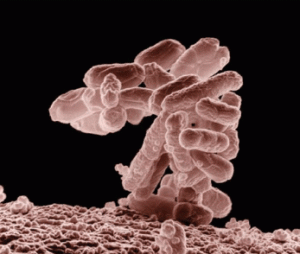
E. coli is the most studied bacterium in science.
As far as we’ve seen, fun and creativity are rarities when it comes to research publications. So any study riffing on Sergio Leone was bound to catch our eye.
E. Coli: The Good, the Bad and the Deadly is a comprehensive look at the most studied bacteria in science. It was put together by American Academy of Microbiology as part of its FAQ series.
The timing couldn’t be better. Just this summer a deadly e. coli outbreak spread across Europe, impacting Germany, France and other European countries. Its source was eventually traced to contaminated fenugreek seeds imported from Egypt.
The report tackles important questions such as:
- How do foods get contaminated? Answer: “It all starts with poop” (direct quote). A common source is manure used for fertilizer in agriculture. Insects can deposit fecal matter on plants–feces from slaughtered cattle can make in onto beef.
- Why does e. coli contamination seem to be on the rise? Mass production of food and importing of food from countries where inspection standards may be lower both play a role. An increase in consumption of raw and organic foods could also contribute.
- What is being done to protect food from contamination? Improved inspection techniques are probably the most important strategy. Apart from that there are a couple more aggressive strategies under investigation, including vaccination and irradiation (!). Yep, you read that right–passing high energy beams could kill mold, bacteria and even insects in food, with “minimal” impact on appearance and taste. However, the report emphasizes the best way to protect ourselves from e. coli is to properly wash and cook food.
The Good, the Bad and the Deadly is about more than just the nuts and bolts of food safety, though. Sprinkled throughout is some interesting trivia. Between 1958 and 2008 e. coli-related research projects won 11 Nobel Prizes, for example.
This is the latest offering in a series of reports meant to address health issues in a timely fashion. Content is based on a single day’s discussion of e. coli by 13 leading experts, who met back in September. Michael Doyle of the University of Georgia Center for Food Safety, a member of the steering committee, said:
The story of E. coli, what we are trying to tell in this report, is really much larger than just its role as a pathogen. It’s been such a large component of research for so long–so much of what we know about biology has come from studying e. coli.
You can view or download the full report here.
